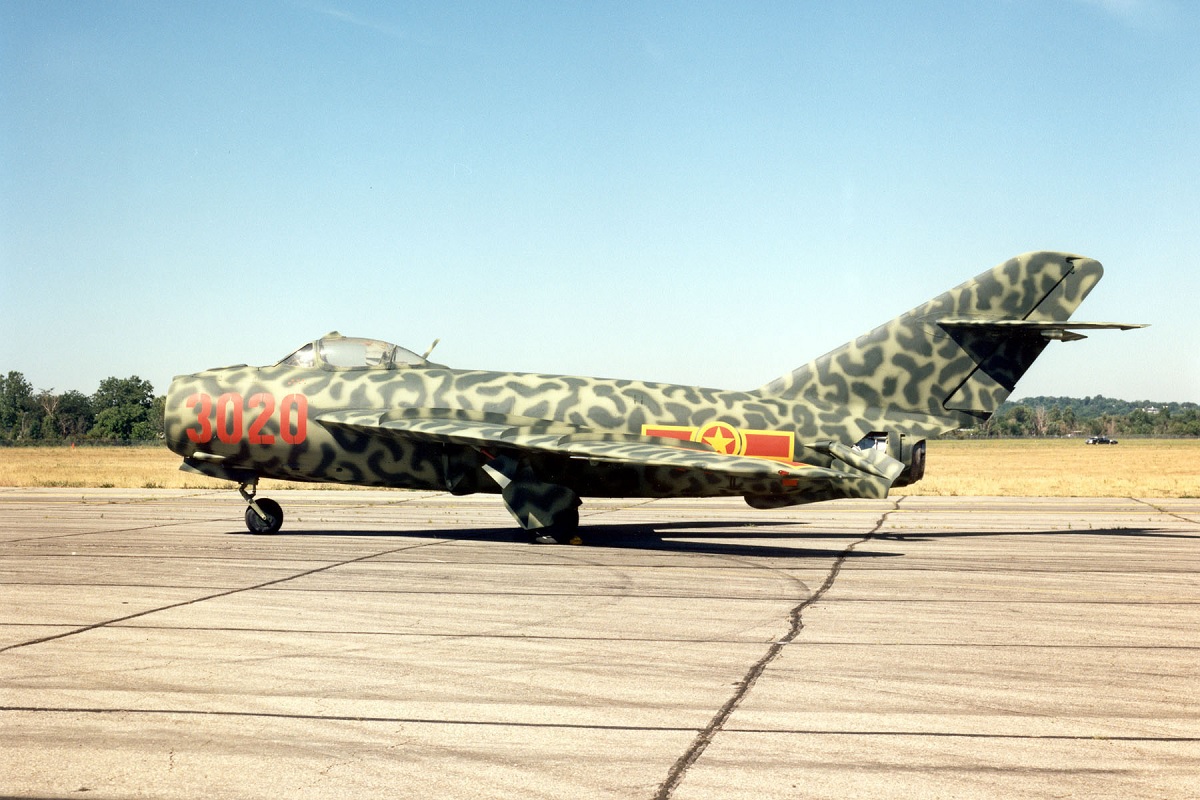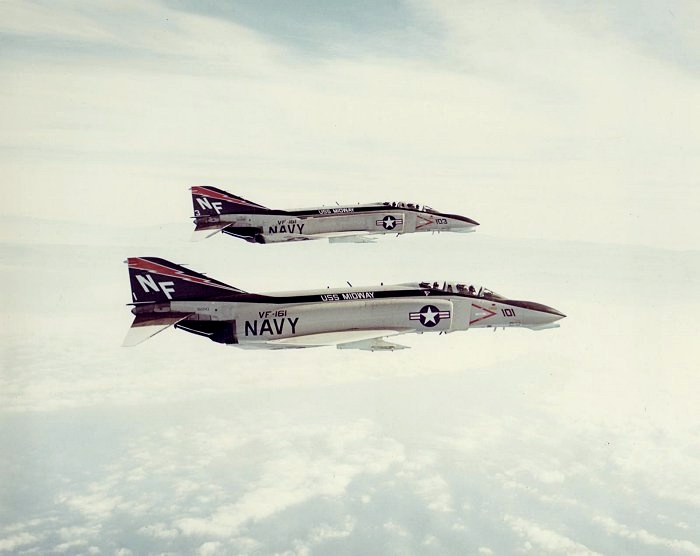Because of relatively lax RoE, the F-4 crew was able to pursue the MiG beyond the 20th parallel
Although the F-4 Phantom II was the most significant fighter-bomber to be used by all three branches of the American armed forces during the Vietnam War, the carrier-borne squadrons that were equipped with the jet were the best at using it in battle. Even though the majority of the aircraft’s operations in Vietnam included ground attacks with a variety of weaponry, the aircraft was a pioneer in the use of long-range, radar-guided missiles in aerial combat.
After many other kinds were replaced, the Phantom II served as the primary U.S. Navy fighter in Southeast Asia from 1969 to 1973. Its effectiveness and adaptability allowed it to carry out a variety of tasks and change roles as needed during the assault on some of the most fiercely fortified territories in the world. F-4 crews were able to benefit from their brethren’s experiences in 1964–68 during Operation Linebacker in 1972–73. Additionally, they were able to put to use the air combat training techniques provided by the US Navy’s Topgun School, which enabled Phantom II crews to defeat enemy fighters with an unequaled level of success in the final year of the Vietnam War.
The 197th and final MiG kill of the Vietnam War took place at 1253 hours on January 12, 1973, when two VF-161 “Chargers” F-4Bs flying a Barrier Combat Air Patrol (BARCAP) mission from USS Midway (CVA-41) intercepted a lone MiG-17, as stated by Peter E. Davies in his book U.S. Navy F-4 Phantom II Units of the Vietnam War 1969-73.

Lt. Victor Kovaleski and Lt(jg) Jim Wise in ‘Rock River 102’ (BuNo 153045), with Lt Pat Arwood and Ens Lynn Oates in a second F-4B, were vectored to intercept a Vietnam People’s Air Force (VPAF) MiG-17 that had ventured out across the coast to try and down a USAF C-130 Hercules.
Although it took “three or four passes for the controller to get them hooked up on the MiG,” according to “Bart” Bartholomay, the crew took advantage of more permissive RoE to pursue the MiG beyond the 20th parallel.
The novice MiG pilot Luu Kim Ngo of the 923rd Fighter Regiment (FR) was intermittently detected on the radar as he flew in a low cloud base while flying at a height of about 1000 feet at a speed of 450 knots. At a distance of four miles, the two pursuing U.S. Navy personnel rapidly acquired a visual identification of their prey and closed undetected.
When the MiG pilot finally caught sight of them, according to Wise’s post-mission report, he turned left and leveled out in front of the F-4s after using his faster turn rate to roll in behind them. Then, for whatever reason, he made a sudden 180-degree turn, putting himself in the F-4Bs’ Sidewinder acquisition range. AIM-9G missile fired from “Rock River 102” by Kovaleski immediately severed a portion of the MiG’s tail. When Luu Kim Ngo tried to jump, his parachute did not deploy, and his body was later found in the water. A second AIM-9G shot from Kovaleski caused the MiG to burn in flames as it fell into the water.

Two days later, while en route to Than Hoa on a Blue Tree reconnaissance escort mission, Kovaleski and Ens D. H. Plautz were struck by an 85 mm AAA. Kovaleski and Plautz were forced to leave F-4B BuNo 153068, which had earlier been a MiG killer for Lts. “Bart” Bartholomay and Oran Brown, due to a damaged engine and a major fuel leak in the Phantom II, and wait for an HH-3A helicopter to rescue them from the water. Their F-4B was the final of Midway air wing’s 44 lost aircraft during the conflict.
U.S. Navy F-4 Phantom II Units of the Vietnam War 1969-73 is published by Osprey Publishing and is available to pre-order here.
Photo by Russell M. Taylor / U.S. Navy and U.S. Air Force

